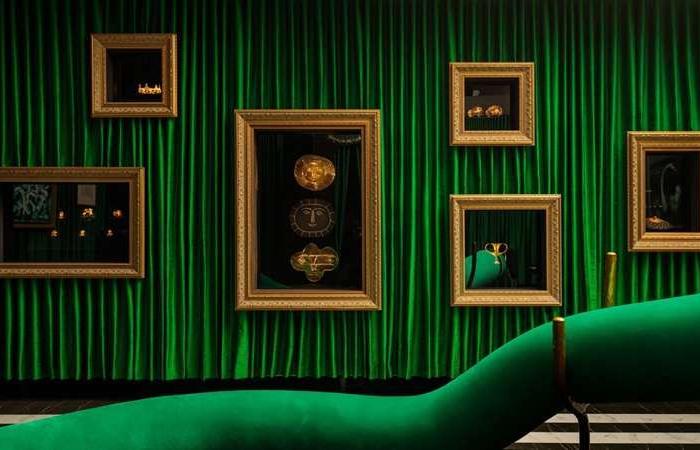If there is one thing that many artists—past and present—have agreed on, it is that Not following the norm is probably the most fruitful way to create amazing works. This was confirmed by the writer Heather Killough-Walden when she said that “no one made a difference by following the rules”, or even by Pablo Picasso from Malaga when she stated that “to flourish, a work of art must ignore or, rather, forget the rules“.
The point is that, following the advice of these figures, future generations of artists learned their lesson well, and an example of this is Kirsha Kaechelethe American curator who created, in 2020, the exhibition Ladies Lounge at the Museum of Old and New Art (MONA). It was a space—or as she herself called it, a “ladies’ tea room”— dedicated to feminine enjoymentinspired by the opulent parties that Kaechele’s great-grandmother hosted at her Beverly Hills estate.
For years the Ladies Lounge was one of the busiest rooms of the museum, but now it remains closed due to the clash between its nature and the law: as a fundamental part of the artistic concept, The exhibition only allowed women to enter.and this had not caused problems until March 2024 a visitor filed a complaint against the curator appealing to the Anti-Discrimination Act, issued in 1998 by the Equality Office of Tasmania, where the museum is located.
Thus, while the lounge remains closed until further notice, as indicated on its website, Kirsha Kaechele has decided to make a small change in the arrangement of the works to continue its artistic purpose: with the excuse of “adding some cubism to the cubicles” , has transferred Several works by Pablo Picassopreviously placed in the ladies’ space, in the women’s bathroom of the museum.
“Learn the rules like a pro…
Rummaging through her great-grandmother’s attic, Kirsha Kaechele found several priceless Picassos that she did not hesitate to display later in the Ladies Lounge: these were probably the most outstanding works of the roomwhose contemplation could be enjoyed while tasting “decadent snacks, elegant drinks and other feminine pleasures,” describes the MONA.

monkey
Ladies Lounge, a women-only exhibition curated by artist Kirsha Kaechele.
MONKEY
That was until the exhibition closed last spring and the art curator confronted the visitor—the complainant, named Jason Lau. in the Tasmanian Civil and Administrative Tribunal. In fact, the judge ordered that, in order for Ladies Lounge could continue with his exercise, Kaechele had to allow the men to enter.
However, the curator chose to temporarily interrupt the exhibition until find a solution that does not undermine the purpose of your work: “I would like to appeal, but first I need to know what would benefit not only my art, but the law, the world and women in general,” she said in an interview published on the museum’s blog.
Among all the proposals he received, a possible way to avoid the end of the majestic “ladies’ hall” was to study in depth the Anti-Discrimination Law to which Lau turned. In its exceptions, it states that is it possible to discriminate on the basis of gender in the case of a religious, educational institution, dedicated to accommodation (if it is a shared place for less than 5 adults) or in facilities intended for use by persons of only one sex.
…To be able to break them like an artist”
Determined not to conform to the judge’s ruling, the artist and curator has assured, both in the interview and on her social networks, that after some “reforms” will convert the Ladies Lounge in a religious, educational space and probably with the capacity to accommodate people (women, of course). All this, with the aim of do what the room meets the necessary characteristics to apply the exceptions of the law.
For now, has already put part of its strategy in motion when placing two Picassos, Woman lying on the sofa (1932) and Lunch on the grass (1961), in the museum’s women’s bathroom, which before it was unisex. The space has been named Ladies Room and, in fact, it adapts perfectly to the last exception of the law, mentioned above.
In this way, Kaechele keeps the expectation alive among his viewers, to whom he promises to offer, in the future, “a church, school, luxury establishment or facility” exclusively for women, which in any case continues to reflect the initial purpose of the exhibition: give visibility to the historical gender segregation in Australia, a country where until 1965 many bars They only allowed entry to menand in which there are still clubs reserved only for gentlemen.



